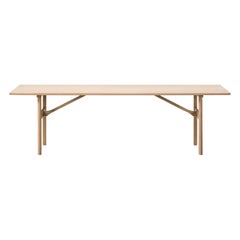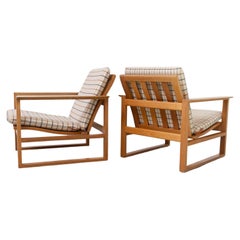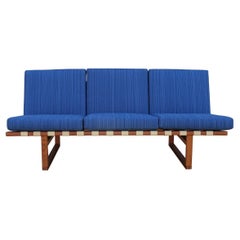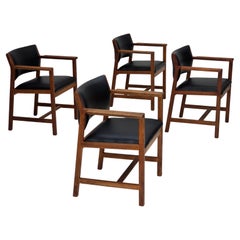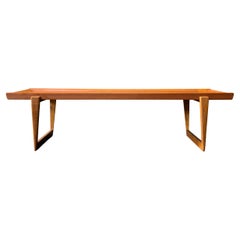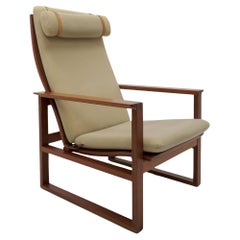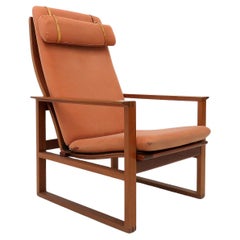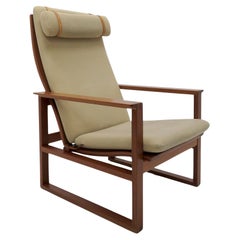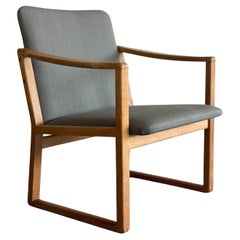Borge Mogensen Model
21st Century and Contemporary American Mid-Century Modern Dining Room Ta...
Oak
Vintage 1960s Danish Scandinavian Modern Lounge Chairs
Oak
Vintage 1950s Danish Mid-Century Modern Sofas
Fabric, Oak, Teak
Vintage 1960s Danish Scandinavian Modern Armchairs
Leather, Oak
Vintage 1950s Danish Mid-Century Modern Coffee and Cocktail Tables
Teak
Vintage 1950s Swedish Scandinavian Modern Lounge Chairs
Leather, Upholstery, Mahogany
Vintage 1950s Swedish Scandinavian Modern Lounge Chairs
Leather, Upholstery, Mahogany
Vintage 1950s Swedish Scandinavian Modern Lounge Chairs
Leather, Upholstery, Mahogany
Vintage 1950s Danish Scandinavian Modern Armchairs
Oak
Vintage 1960s Danish Scandinavian Modern Settees
Wool, Oak
Vintage 1960s Danish Scandinavian Modern Settees
Wool, Wood
Vintage 1950s Danish Scandinavian Modern Dining Room Chairs
Teak
Mid-20th Century Danish Mid-Century Modern Dining Room Chairs
Papercord, Oak
Vintage 1950s Danish Scandinavian Modern Desks
Teak
Mid-20th Century Danish Scandinavian Modern Chairs
Upholstery, Oak
Mid-20th Century Danish Scandinavian Modern Sofas
Leather
Vintage 1960s Danish Scandinavian Modern Coffee and Cocktail Tables
Oak
Vintage 1960s Danish Scandinavian Modern Coffee and Cocktail Tables
Oak
Vintage 1960s Danish Scandinavian Modern Armchairs
Linen, Oak
Vintage 1950s Danish Scandinavian Modern Sofas
Wool, Oak
Early 2000s Danish Mid-Century Modern Lounge Chairs
Leather, Wood, Oak
Vintage 1950s Danish Mid-Century Modern Chairs
Leather, Oak
Vintage 1960s Danish Mid-Century Modern Dining Room Chairs
Oak, Teak
Vintage 1960s Danish Scandinavian Modern Card Tables and Tea Tables
Metal
Mid-20th Century Danish Scandinavian Modern Chairs
Papercord, Oak
Mid-20th Century Danish Mid-Century Modern Lounge Chairs
Leather, Wood
Vintage 1960s Lounge Chairs
Leather, Oak
Vintage 1950s Danish Scandinavian Modern Cabinets
Maple, Teak
Vintage 1960s Danish Mid-Century Modern Coffee and Cocktail Tables
Oak
Vintage 1960s Danish Scandinavian Modern Dining Room Chairs
Steel
Vintage 1960s Danish Scandinavian Modern Cabinets
Brass
Vintage 1950s Danish Mid-Century Modern Side Chairs
Oak, Teak
Vintage 1960s Danish Mid-Century Modern Armchairs
Fabric, Oak
Vintage 1960s European Mid-Century Modern Sofas
Upholstery, Wood
Vintage 1960s Danish Scandinavian Modern Dining Room Chairs
Cane, Oak
Vintage 1960s Danish Mid-Century Modern Dining Room Chairs
Wicker, Wood
Vintage 1960s Danish Scandinavian Modern Cabinets
Brass
Vintage 1970s Swedish Scandinavian Modern Armchairs
Cane, Pine
Vintage 1970s Danish Mid-Century Modern Wingback Chairs
Leather
Vintage 1960s Danish Scandinavian Modern Lounge Chairs
Leather, Oak
Vintage 1950s Danish Brutalist Club Chairs
Leather, Hardwood
Mid-20th Century Danish Scandinavian Modern Lounge Chairs
Fabric, Alpaca, Oak
Mid-20th Century Danish Mid-Century Modern Daybeds
Leather, Oak
Vintage 1950s Swedish Scandinavian Modern Dining Room Tables
Brass
Vintage 1950s Danish Mid-Century Modern Daybeds
Teak
Mid-20th Century Danish Scandinavian Modern Sofas
Wool, Velvet, Oak
Vintage 1960s Danish Scandinavian Modern Lounge Chairs
Leather, Oak
Mid-20th Century Danish Scandinavian Modern Sofas
Fabric, Beech
Vintage 1960s Danish Scandinavian Modern Lounge Chairs
Leather, Teak
Vintage 1960s Danish Scandinavian Modern Lounge Chairs
Leather, Teak
Vintage 1960s Danish Scandinavian Modern Lounge Chairs
Leather, Teak
Vintage 1960s Danish Scandinavian Modern Armchairs
Oak
Vintage 1960s Danish Scandinavian Modern Lounge Chairs
Leather, Teak
Vintage 1960s Danish Scandinavian Modern Lounge Chairs
Leather, Oak
Vintage 1960s Danish Scandinavian Modern Lounge Chairs
Leather, Teak
Vintage 1960s Swedish Scandinavian Modern Lounge Chairs
Oak
Vintage 1960s Danish Scandinavian Modern Sofas
Leather, Teak
- 1
- ...
Borge Mogensen Model For Sale on 1stDibs
How Much is a Borge Mogensen Model?
Børge Mogensen for sale on 1stDibs
Among the great mid-20th century Danish furniture designers, Børge Mogensen distinguished himself with his faith to traditional values of craftsmanship and honesty of materials.
While peers such as Hans Wegner, Finn Juhl and Arne Jacobsen designed some of the most striking and now iconic furnishings of the era, Mogensen focused on making chairs, sofas and other pieces that were simple, durable and comfortable — and in the long run perhaps more useful and better loved.
Mogensen studied under and later worked for Kaare Klint, a master cabinetmaker whose chief tenets were quality of construction and simplicity of line. Klint was a classicist, who believed that furniture forms should evolve from those of historical models. So, too, in his way was Mogensen, as two of his best-known earlier pieces attest.
His 1945 Spokeback sofa, with hinged arms that can be lowered to facilitate lounging, is a reinterpretation of the venerable Knole settee. With the oval silhouette of its plywood backrest and waterdrop-shaped cutouts, Mogensen’s Shell chair, designed in 1949, can be seen as a novel take on early 19th-century Empire side chairs.
Yet Mogensen shared the aesthetical sensibilities of his most forward-looking colleagues. His cabinets deploy the same spare geometries and lushly figured woods as those of Ludwig Mies van der Rohe and his disciple Florence Knoll, the chief difference being that Mies and Knoll used chrome steel for the frames and legs of their pieces. The brawny oak frames and slung leather seats and backrests of Mogensen’s Hunting chair (1950) and Spanish chair (1958) display the same hefty construction and appreciation of natural materials seen in the work of Charlotte Perriand and Sergio Rodrigues.
Mogensen designed for function more than sculptural effect. While his chairs may not be the first pieces in a décor to draw the eye, they are often the first to draw in those looking for a comfortable seat.
Find vintage Børge Mogensen dining tables, bookcases and other Scandinavian modern furniture for sale on 1stDibs.
Finding the Right Seating for You
With entire areas of our homes reserved for “sitting rooms,” the value of quality antique and vintage seating cannot be overstated.
Fortunately, the design of side chairs, armchairs and other lounge furniture — since what were, quite literally, the early perches of our ancestors — has evolved considerably.
Among the earliest standard seating furniture were stools. Egyptian stools, for example, designed for one person with no seat back, were x-shaped and typically folded to be tucked away. These rudimentary chairs informed the design of Greek and Roman stools, all of which were a long way from Sori Yanagi's Butterfly stool or Alvar Aalto's Stool 60. In the 18th century and earlier, seats with backs and armrests were largely reserved for high nobility.
The seating of today is more inclusive but the style and placement of chairs can still make a statement. Antique desk chairs and armchairs designed in the style of Louis XV, which eventually included painted furniture and were often made of rare woods, feature prominently curved legs as well as Chinese themes and varied ornaments. Much like the thrones of fairy tales and the regency, elegant lounges crafted in the Louis XV style convey wealth and prestige. In the kitchen, the dining chair placed at the head of the table is typically reserved for the head of the household or a revered guest.
Of course, with luxurious vintage or antique furnishings, every chair can seem like the best seat in the house. Whether your preference is stretching out on a plush sofa, such as the Serpentine, designed by Vladimir Kagan, or cozying up in a vintage wingback chair, there is likely to be a comfy classic or contemporary gem for you on 1stDibs.
With respect to the latest obsessions in design, cane seating has been cropping up everywhere, from sleek armchairs to lounge chairs, while bouclé fabric, a staple of modern furniture design, can be seen in mid-century modern, Scandinavian modern and Hollywood Regency furniture styles.
Admirers of the sophisticated craftsmanship and dark woods frequently associated with mid-century modern seating can find timeless furnishings in our expansive collection of lounge chairs, dining chairs and other items — whether they’re vintage editions or alluring official reproductions of iconic designs from the likes of Hans Wegner or from Charles and Ray Eames. Shop our inventory of Egg chairs, designed in 1958 by Arne Jacobsen, the Florence Knoll lounge chair and more.
No matter your style, the collection of unique chairs, sofas and other seating on 1stDibs is surely worthy of a standing ovation.
